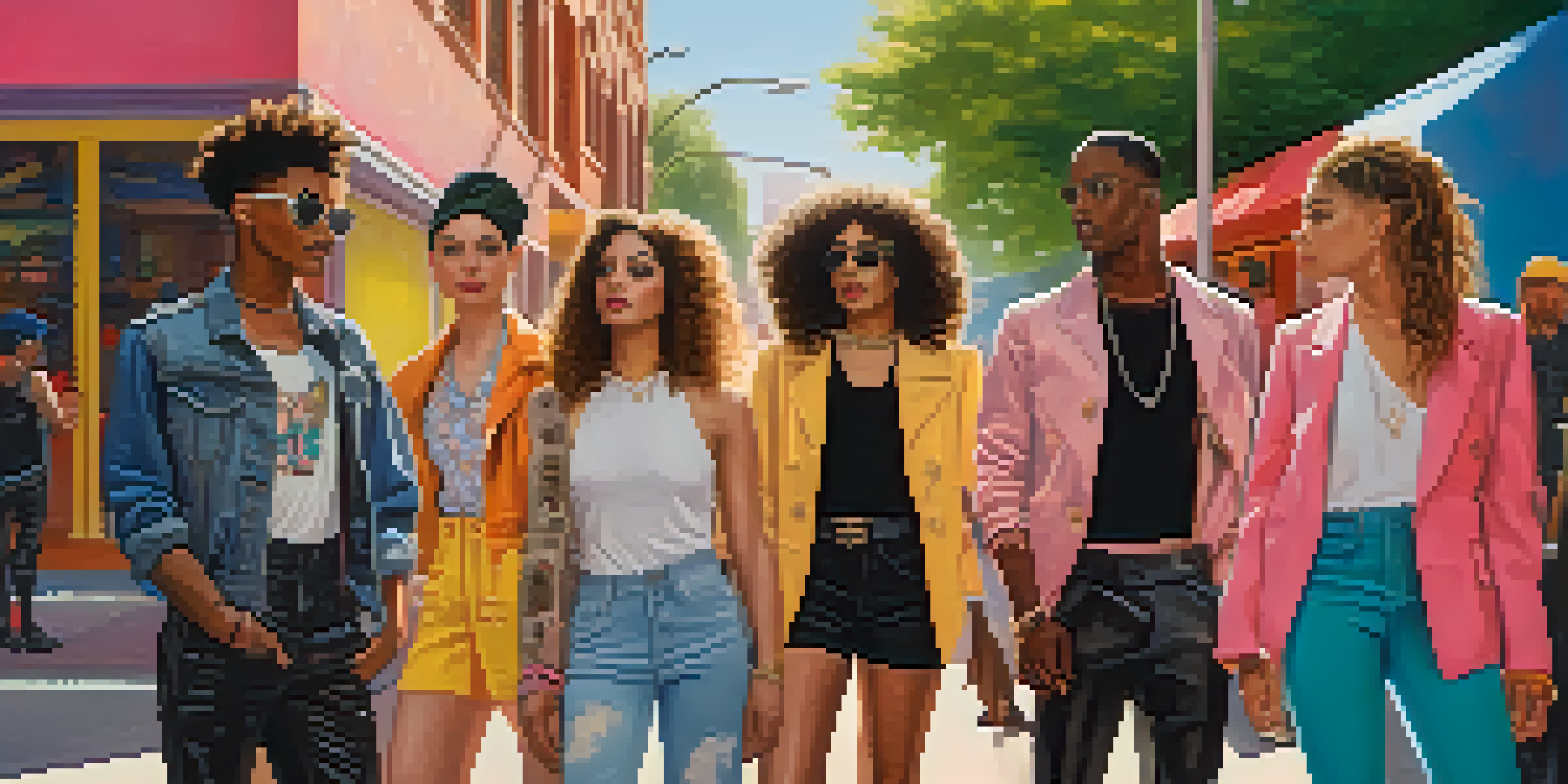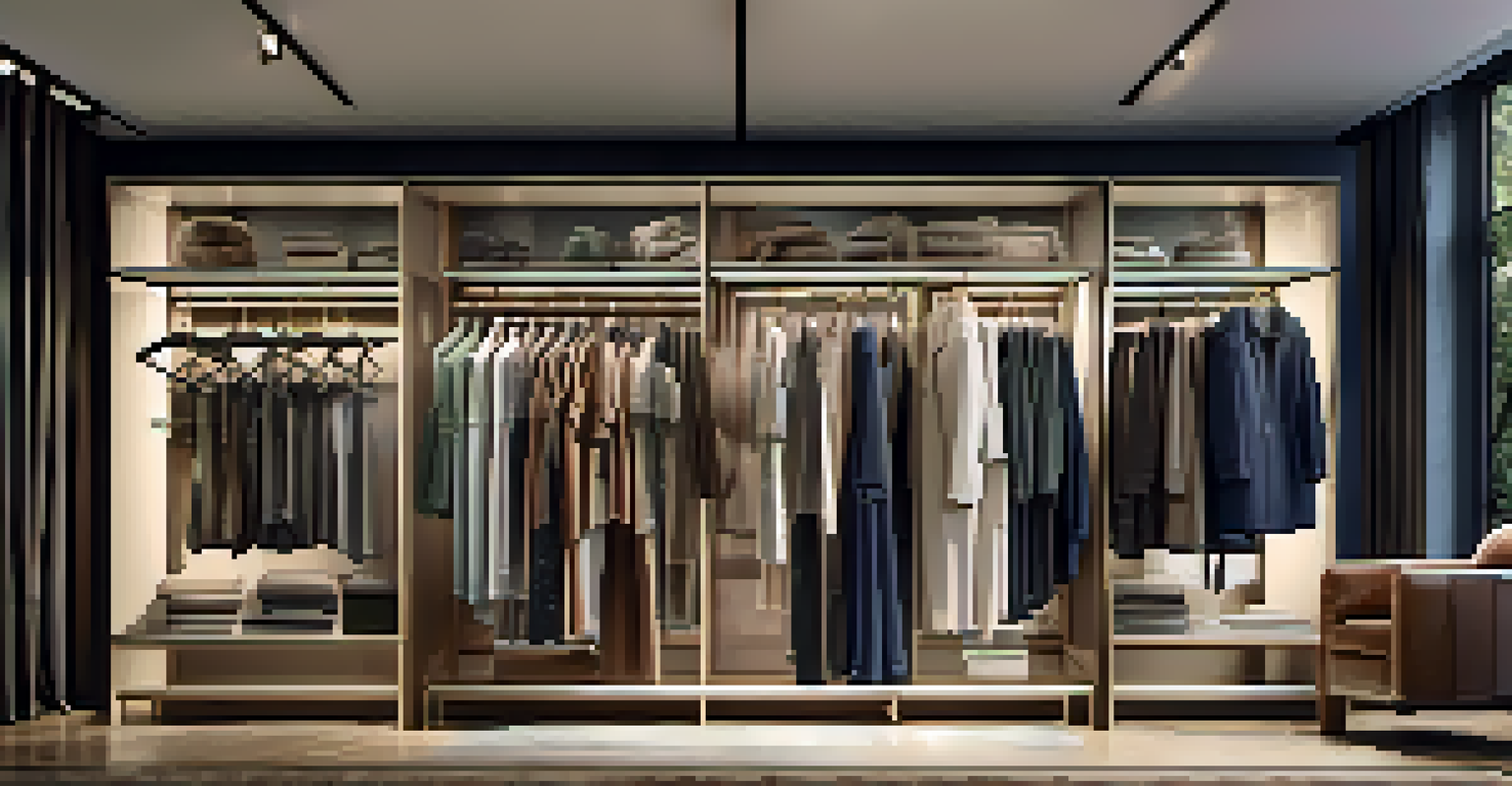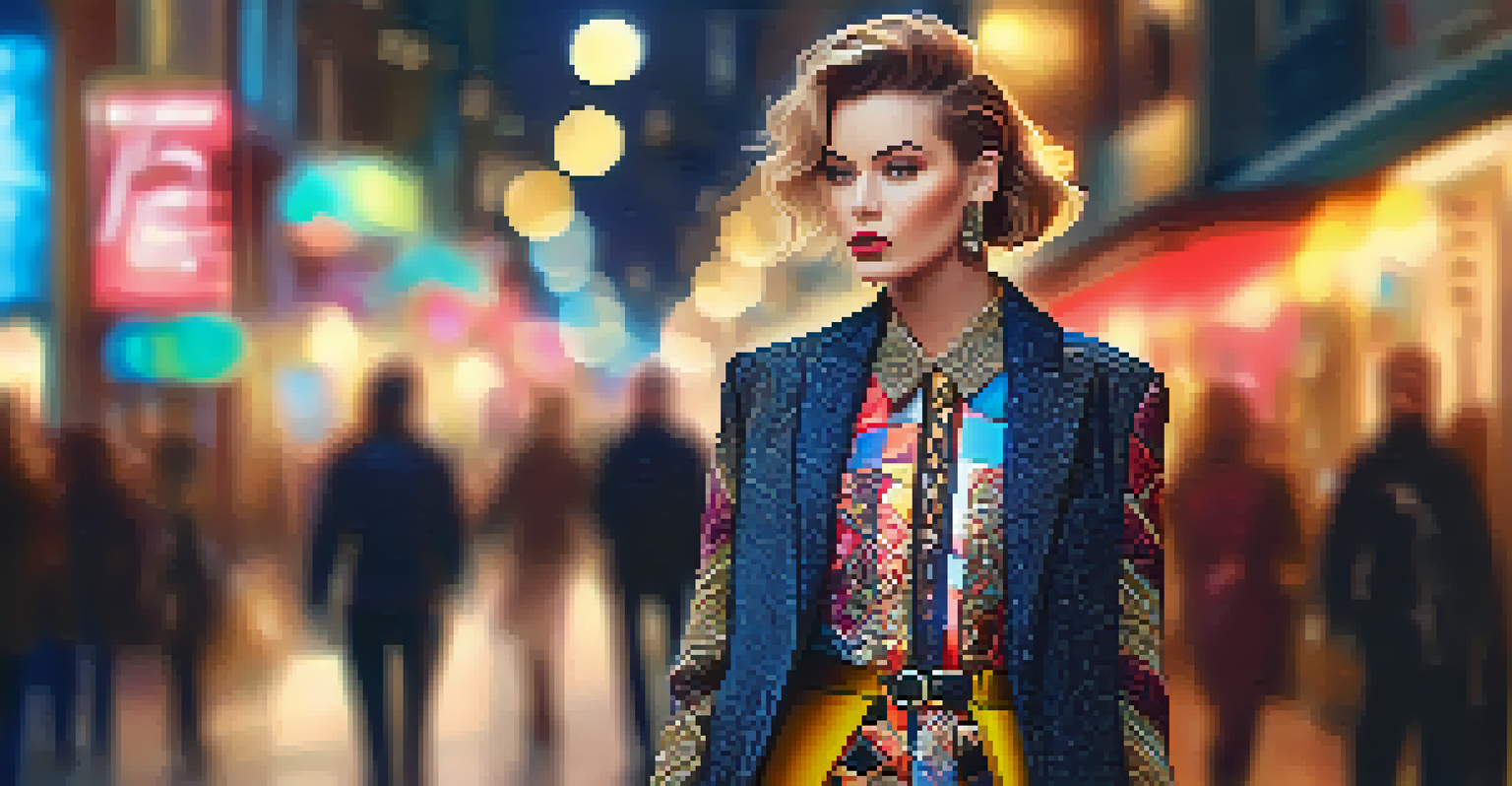The Rise of Gender Fluidity in Contemporary Fashion Trends

Understanding Gender Fluidity in Today's Society
Gender fluidity refers to a flexible range of gender identities that may change over time. In contrast to traditional binary concepts of male and female, gender fluidity allows individuals to express themselves on a spectrum. This evolving understanding has roots in various cultures and histories, emphasizing that gender is not strictly tied to biological sex.
Fashion is a way to say who you are without having to speak.
As conversations about gender identity have become more prominent, society is increasingly recognizing the validity of non-binary identities. This acknowledgment encourages individuals to embrace their authentic selves without conforming to societal expectations. The rise of social media has further amplified these discussions, creating a platform for diverse voices and experiences.
In contemporary fashion, this shift towards gender fluidity is not just a trend but a transformative movement. Designers and brands are responding to this cultural evolution by creating collections that celebrate inclusivity and individuality, inviting everyone to participate.
Fashion Icons Embracing Gender Fluidity
Many fashion icons and celebrities have taken a stand for gender fluidity, using their platforms to challenge conventional norms. Artists like Billy Porter and Jaden Smith have made headlines by showcasing gender-bending styles on red carpets and in media. Their expressions of fashion encourage a broader acceptance of diverse gender identities.

These public figures often serve as role models, inspiring fans to experiment with their own styles. By breaking free from traditional gendered clothing, they demonstrate that fashion can be a powerful form of self-expression. This visibility is crucial in normalizing gender fluidity in everyday life.
Embracing Gender Fluidity
Gender fluidity offers a flexible range of identities, encouraging individuals to express themselves beyond traditional binary norms.
Moreover, the influence of these icons extends beyond just clothing choices; they spark conversations about identity and acceptance within the fashion industry. Their impact fosters a more inclusive environment, encouraging others to explore their own gender expressions through fashion.
The Role of Fashion Designers in Shaping Trends
Fashion designers play a pivotal role in shaping and reflecting societal trends. Many are now prioritizing gender neutrality in their collections, creating garments that can be worn by anyone regardless of gender. This shift not only challenges the status quo but also opens up a new realm of creativity in design.
Gender is not something that you are born with, but something that you create.
Designers like Gucci and Balenciaga have embraced androgynous styles, blurring the lines between traditionally male and female aesthetics. Their innovative approaches encourage consumers to rethink how they view clothing and its association with gender. This willingness to experiment is a testament to the evolving landscape of contemporary fashion.
Additionally, some brands are even dedicating entire lines to gender-fluid collections, underscoring the demand for inclusivity. This movement not only reflects societal changes but also demonstrates that fashion can be a progressive force in advocating for acceptance and diversity.
Consumer Demand for Gender-Neutral Fashion
As awareness of gender fluidity rises, consumer demand for gender-neutral fashion is becoming increasingly apparent. Shoppers are seeking brands that resonate with their values and reflect their identities, prompting retailers to adapt. This shift highlights a broader desire for authenticity and representation in the products people choose to wear.
Many consumers, especially younger generations, are prioritizing comfort and personal expression over traditional gender norms. They are drawn to clothing that allows them to mix and match styles without being confined to a specific label. This demand is pushing brands to innovate and diversify their offerings.
Fashion's Role in Inclusivity
Fashion designers are increasingly creating gender-neutral collections, reflecting societal changes and promoting self-expression.
Moreover, the rise of online shopping has given consumers greater access to gender-fluid brands, expanding their choices. As more people embrace gender fluidity, the fashion industry is responding by creating environments that celebrate diversity and individuality in style.
Cultural Influences on Gender Fluidity in Fashion
Cultural influences play a significant role in shaping fashion trends, and gender fluidity is no exception. Historical movements, such as the LGBTQ+ rights movement, have paved the way for greater acceptance of diverse gender identities. As society evolves, fashion reflects these changes, presenting opportunities for self-expression and creativity.
Different cultures have long embraced non-binary gender expressions, showcasing how varied and rich these identities can be across the globe. From traditional clothing to contemporary designs, cultural factors contribute to a broader understanding of gender fluidity in fashion. This interplay of tradition and modernity enriches the fashion landscape.
Furthermore, as global connectivity increases, cross-cultural exchanges become more prevalent, influencing design and consumer choices. Designers are now looking to diverse cultures for inspiration, leading to a more inclusive and representative fashion industry.
The Impact of Social Media on Fashion Trends
Social media has revolutionized how fashion trends emerge and evolve, particularly regarding gender fluidity. Platforms like Instagram and TikTok provide a space for individuals to showcase their unique styles and challenge traditional gender norms. This democratization of fashion enables diverse voices to be heard and celebrated.
Through hashtags and viral challenges, users are able to share their personal journeys of self-expression, creating a community that embraces fluidity. This visibility not only normalizes gender diversity but also encourages others to explore their own identities without fear of judgment. Social media empowers individuals to redefine fashion on their terms.
Social Media's Impact
Social media platforms empower individuals to showcase diverse styles, challenging gender norms and fostering a supportive community.
Moreover, brands are increasingly leveraging social media to connect with consumers and promote gender-neutral offerings. By engaging with their audience online, they can gauge trends and preferences, ensuring that their collections resonate with a wider audience.
Challenges and Critiques of Gender Fluidity in Fashion
Despite its growing acceptance, the rise of gender fluidity in fashion is not without challenges. Some critics argue that the commercialization of gender fluidity risks diluting its authenticity. As brands capitalize on this trend, questions arise about whether they are genuinely committed to inclusivity or simply following the latest fad.
Additionally, the fashion industry still grapples with systemic issues, such as size inclusivity and representation for all gender identities. While there have been strides toward change, many consumers feel that the industry has a long way to go in truly embracing diversity. Addressing these concerns is crucial for fostering an environment where everyone feels represented.

Ultimately, as the conversation around gender fluidity continues, it is essential for both brands and consumers to engage in meaningful dialogue. By critically examining trends and advocating for genuine inclusivity, the fashion industry can become a more supportive space for all individuals.